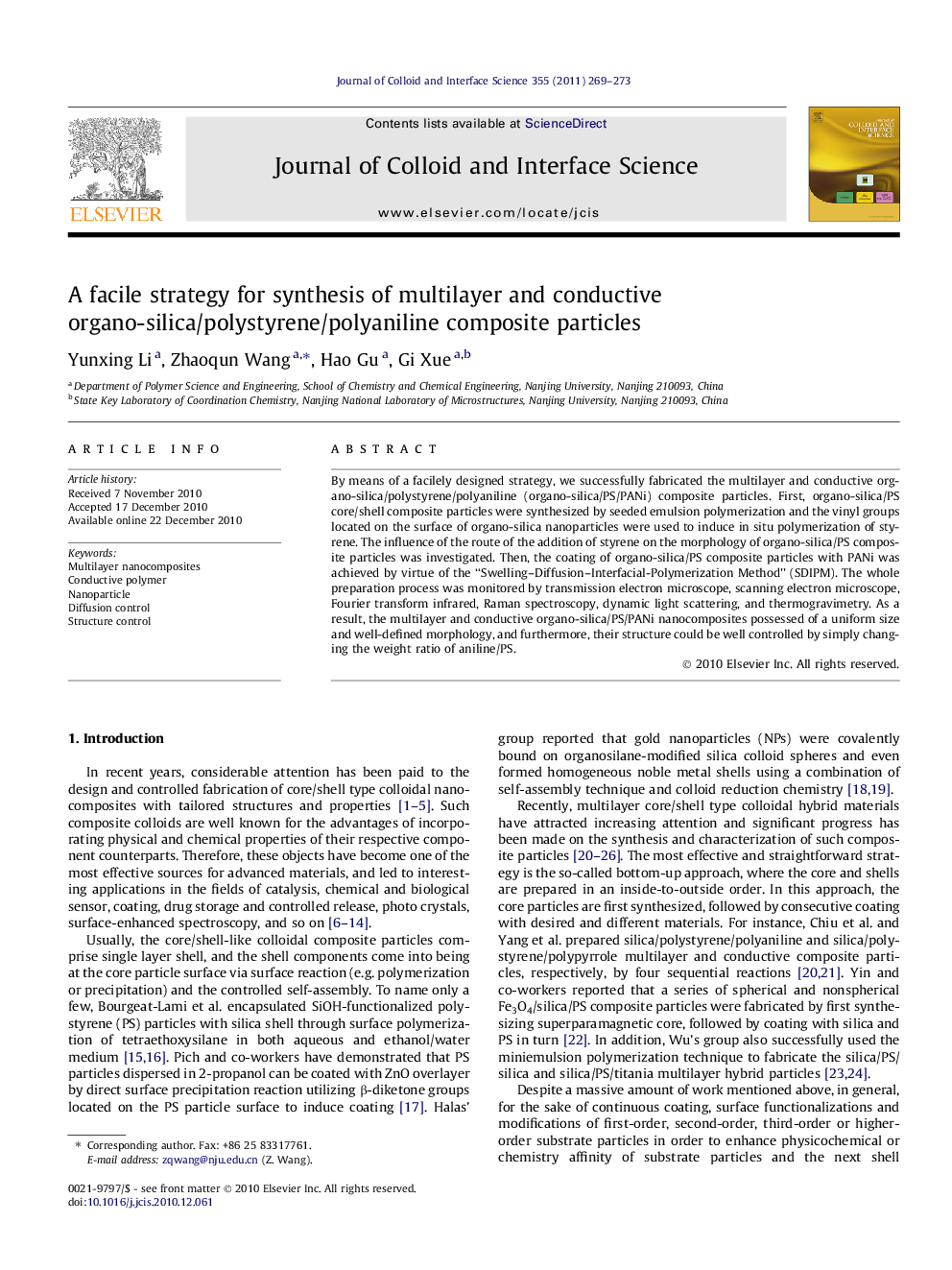| Article ID | Journal | Published Year | Pages | File Type |
|---|---|---|---|---|
| 609055 | Journal of Colloid and Interface Science | 2011 | 5 Pages |
By means of a facilely designed strategy, we successfully fabricated the multilayer and conductive organo-silica/polystyrene/polyaniline (organo-silica/PS/PANi) composite particles. First, organo-silica/PS core/shell composite particles were synthesized by seeded emulsion polymerization and the vinyl groups located on the surface of organo-silica nanoparticles were used to induce in situ polymerization of styrene. The influence of the route of the addition of styrene on the morphology of organo-silica/PS composite particles was investigated. Then, the coating of organo-silica/PS composite particles with PANi was achieved by virtue of the “Swelling–Diffusion–Interfacial-Polymerization Method” (SDIPM). The whole preparation process was monitored by transmission electron microscope, scanning electron microscope, Fourier transform infrared, Raman spectroscopy, dynamic light scattering, and thermogravimetry. As a result, the multilayer and conductive organo-silica/PS/PANi nanocomposites possessed of a uniform size and well-defined morphology, and furthermore, their structure could be well controlled by simply changing the weight ratio of aniline/PS.
Graphical abstractA facile strategy is exploited intelligently to fabricate the multilayer and conductive organo-silica/polystyrene/polyaniline (organo-silica/PS/PANi) composite particles with well-defined morphology and a narrow size distribution.Figure optionsDownload full-size imageDownload high-quality image (93 K)Download as PowerPoint slideResearch highlights► We simplified preparation process without any surface treatments of substrates. ► Organo-silica/PS/PANi composite particles were prepared by distinct SDIPM. ► Multilayer composite particles had good morphology and narrow size distribution.
